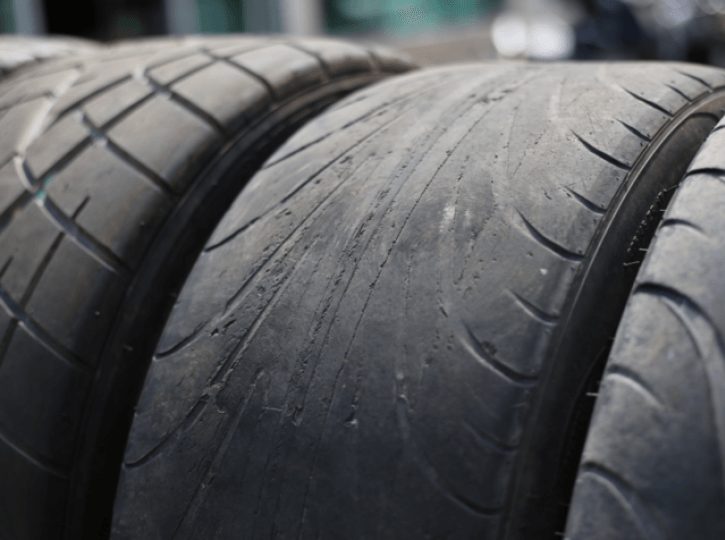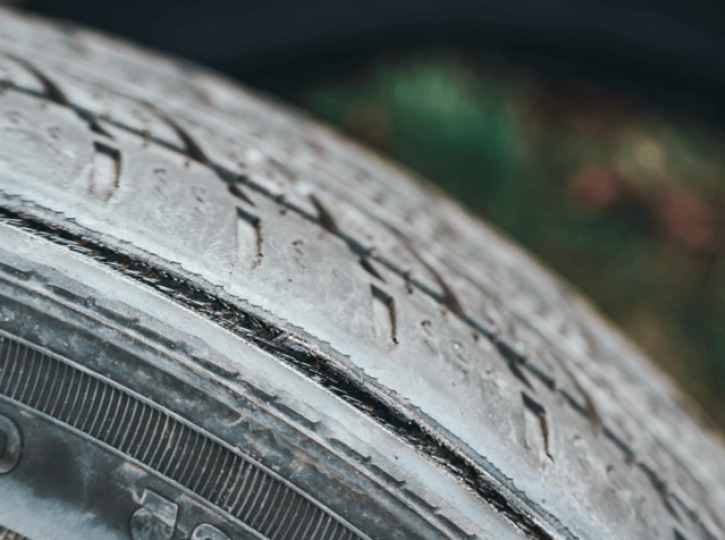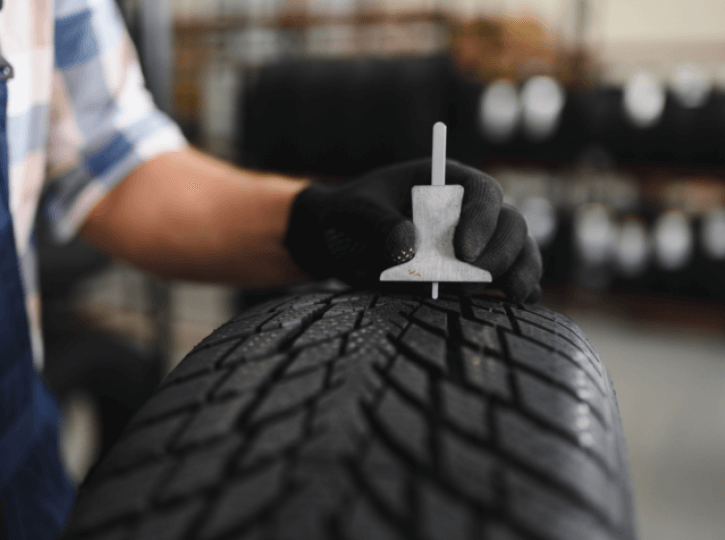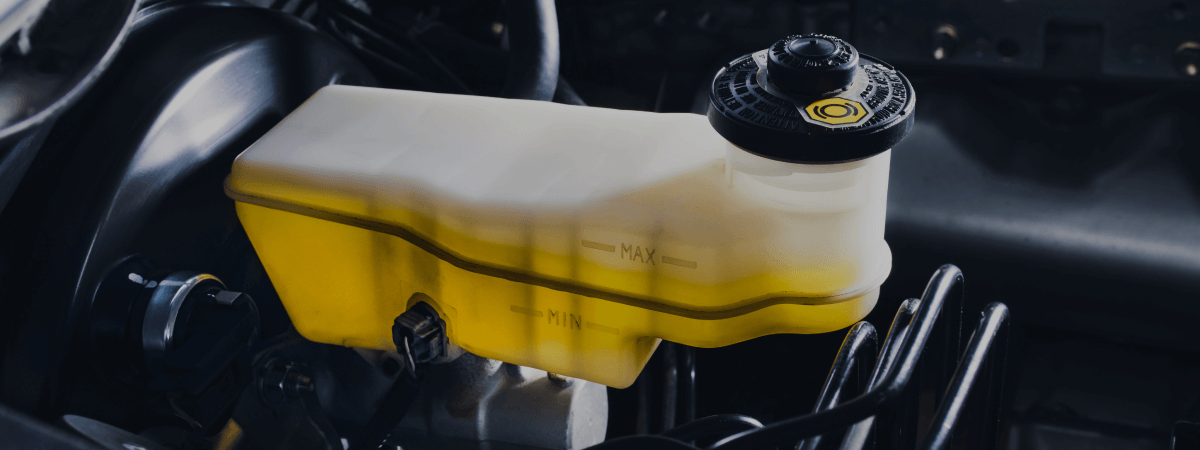
Key Takeaways
- On average, passenger vehicle tires last 40,000 to 60,000 miles, depending on type, driving habits, and maintenance.
- Replace tires when tread depth reaches 2/32”, if damaged, or older than 10 years.
- Regular rotation, alignment, and proper inflation extend tire life.
- Aggressive driving, poor roads, and harsh weather shorten tire lifespan.
- Take advantage of Master AutoTech’s Tire Special for safe, long-lasting tires.
Tires don’t last forever. While there’s no single answer, most all-season tires on a passenger vehicle can last anywhere between 40,000 to 60,000 miles, with the average driver hitting around 50,000 miles before replacement is needed. However, this lifespan depends heavily on how you drive, maintain your tires, and the conditions your tires face.
High-performance tires, economy tires, and specialty winter or off-road tires have different lifespans. Premium touring tires can reach up to 80,000 miles, whereas budget or performance tires may only last 20,000 to 40,000 miles.
The key takeaway: tires should be inspected regularly, and replacement should occur before wear or age compromises safety.

When to Change Your Tires
Knowing when to change tires is just as crucial as understanding how long tires last. Worn or damaged tires can compromise safety, reduce fuel efficiency, and affect vehicle handling.
Keep an eye out for these key signs that it’s time for new tires:
Low Tread Depth
Tread provides the traction your tires need to grip the road, especially in wet or slippery conditions. The legal minimum tread depth in the U.S. is 2/32”, but replacing tires before they reach this limit is safer.
You can check tread depth using a tread gauge or the simple penny test: insert a penny into the tread with Lincoln’s head facing down: if the top of his head is visible, it’s time to replace the tire.
Visible Damage
Inspect your tires regularly for cracks, bulges, cuts, or exposed steel belts. Any of these issues indicates that the tire’s structural integrity has been compromised. Driving on damaged tires increases the risk of blowouts and should be avoided immediately.
Uneven Wear
Uneven tire wear often points to alignment, suspension, or inflation problems. Common patterns include:
- Outer or inner edge wear: Misalignment or underinflation.
- Center wear: Overinflation.
- Cupped wear: Potential suspension issues.
If you notice uneven wear, have your tires inspected by a professional. Replacing tires alone won’t solve the underlying problem; it could recur if the cause isn’t addressed.
Age
Even tires that see little mileage can degrade over time. The rubber compounds harden and lose flexibility, reducing grip and increasing the risk of failure. Most manufacturers recommend replacing tires after 10 years, regardless of mileage.
You can check your tire’s age using the DOT number on the sidewall. The last four digits indicate the week and year of manufacture. For example, a DOT code ending in 3618 means the tire was made in the 36th week of 2018. Monitoring tire age helps you avoid using tires that are past their safe lifespan.
Other Signs to Watch For:
- Excessive vibration while driving
- Difficulty maintaining proper tire pressure
- Noticeable decline in handling or braking performance
How Often Should I Change My Tires?
The frequency of tire replacement depends on several factors:
- Driving habits: Aggressive acceleration, braking, and cornering wear tires faster. Gentle driving preserves tread life.
- Mileage: Inspect tires every 5,000 to 8,000 miles. This is a good interval for rotation and maintenance checks.
- Maintenance: Proper inflation, regular rotations, and alignment checks can extend tire life significantly.
- Weather and road conditions: Hot climates, snowy or icy roads, potholes, and rough terrain accelerate tire wear.
For most drivers, a general guideline is every 3 to 6 years or 40,000 to 60,000 miles, whichever comes first, assuming normal driving and proper maintenance.
Factors That Affect Tire Lifespan
Understanding what affects how long tires last can help you get the most out of your investment while keeping your vehicle safe on the road.
Several key factors contribute to tire wear and overall lifespan.
Driving Conditions
Where and how you drive has a significant impact on tire life. Urban stop-and-go traffic, frequent short trips, and heavy braking put extra stress on tires, causing them to wear faster than tires primarily used for long highway trips.
Roads with potholes, cracks, gravel, or uneven pavement can damage tires’ structural integrity, leading to bulges, sidewall cracks, or uneven tread wear. Even minor collisions with curbs or debris can shorten tire lifespan.
If your daily commute exposes your tires to these challenges, it’s wise to schedule regular inspections and maintenance to catch early signs of wear.
Weather Conditions
Tires are designed to perform under certain climate conditions, but extreme weather can still accelerate wear.
Hot climates cause the rubber compounds in tires to break down more quickly, increasing the risk of cracking or tread separation. In icy or snowy regions, standard all-season tires wear faster due to increased friction and the stress of maintaining traction on slippery surfaces.
Using tires designed for the season (like winter tires for snowy roads) can preserve tread life, improve handling, and increase overall safety.
Regularly checking tires for temperature-related damage can also help you know when to replace them.
Driving Habits
How you drive matters just as much as where you drive.
Aggressive habits, such as rapid acceleration, hard braking, and sharp cornering, can dramatically reduce tire lifespan. These actions create excess heat and stress on the tread and sidewalls, which leads to faster wear.
On the other hand, smooth, steady driving with gradual acceleration and braking preserves tread and extends the life of your tires. Keeping a safe following distance also reduces the need for sudden stops, minimizing stress on your tires.
Maintenance
Proper maintenance is one of the most effective ways to ensure your tires last as long as possible.
Key maintenance steps include:
- Checking tire pressure monthly: Underinflated or overinflated tires wear unevenly and can compromise safety. Maintaining the manufacturer-recommended tire pressure ensures even tread wear and better fuel efficiency.
- Rotating tires every 5,000 to 8,000 miles: Regular rotations help distribute wear evenly across all tires, extending their lifespan and preventing premature replacement.
- Inspecting alignment: Misaligned wheels cause uneven tire wear, decreased handling performance, and increased stress on suspension components. Alignment checks should be part of routine maintenance.
- Checking for damage: Look for visible signs like cuts, cracks, bulges, or embedded objects in the tread. Even small damages can worsen over time and increase the risk of tire failure.
How to Extend Tire Life
Proper care and mindful driving can significantly increase how long tires last and keep your vehicle safe on the road. Here’s what you can do to get the most out of your tires:
Drive Gently
Avoid rapid acceleration, hard braking, and aggressive cornering. Smooth, controlled driving reduces stress on your tires, helping prevent uneven wear and extending their overall lifespan.
Stick to Maintained Roads
Whenever possible, stay on well-maintained roads to minimize exposure to potholes, broken pavement, and curbs. These hazards can damage tires and suspension components, shortening tire life and affecting alignment.
Maintain Tires Regularly
Routine tire care is crucial:
- Rotate tires every 5,000 to 8,000 miles to ensure even wear across all four tires.
- Check wheel alignment and balance regularly to prevent uneven tread wear and vibration.
- Inspect for damage like cuts, bulges, or embedded objects, replacing tires if necessary.
Monitor Tread Depth
Keep a close eye on tread depth. Tires should be replaced when the tread reaches 2/32” or sooner if uneven wear occurs. Regular checks help maintain traction and vehicle safety, especially in wet or icy conditions.
Use Season-Appropriate Tires
Tires perform best when used under the conditions they were designed for. But how long do tires last, depending on the type? For quick reference, you can expect the following lifespans:
- All-season tires: Ideal for moderate climates, lasting 40,000–60,000 miles.
- Performance tires: Designed for sporty handling, typically last 20,000–40,000 miles.
- Premium touring tires: High-quality tires built for longevity, often reaching up to 80,000 miles.
- Winter tires: Engineered for icy and snowy conditions, generally last 20,000–40,000 miles, depending on usage and winter severity.
Following these simple steps not only helps you answer “how often should I change my tires” but also maximizes the safety, performance, and value of your tire investment.
How To Save on Replacement Tires
Now that we’ve answered the question, “How long do tires last?” it’s time to take care of the issue. Master AutoTech’s limited-time Tire Special makes it easier than ever to replace worn tires before winter hits.
Take advantage of:
- Discounts on high-quality tires
- Free tire installation with your purchase
- Complimentary tire inspection and rotation
Stay safe, maintain peak performance, and save money this season. Schedule your tire service today!
Related Posts
Key Takeaways On average, passenger vehicle tires last 40,000 to 60,000 miles, depending on type, driving habits, and maintenance. Replace tires when tread depth reaches 2/32”, if damaged, or older than 10 years. Regular rotation, alignment, and proper inflation extend tire life. Aggressive driving, poor roads, and harsh weather shorten tire lifespan. Take advantage [...]
When you think about car maintenance, you probably focus on oil changes, tire rotations, and maybe even brake pad replacement. But what about your brake fluid? If you’ve ever wondered, “What does brake fluid do?” or “Why is brake fluid important?”, you’re not alone. Brake fluid might not be the most talked-about part of [...]
Is that high-pitched squeal from your brakes driving you—and everyone else—crazy? Don’t ignore it. Squeaky brakes aren’t just annoying, they’re your car’s way of saying something needs attention. Whether you're cruising through Salt Lake City or winding up Idaho’s mountain passes, here’s what’s likely going on, how you can fix it, and when it [...]






